|
In a single day, the electric car boom may have scored hundreds of millions of dollars of additional investments in three states. First, New Jersey’s biggest utility owner Public Service Enterprise Group laid out a plan to spend $300 million on electric-car charging stations. Then California cleared utilities to invest a combined $738 million on projects promoting EVs.
BLOOMBERG -- And the New York Power Authority committed as much as $250 million on charging stations, including ones at airports. States are doubling down on efforts to replace gasoline-guzzling cars with emissions-free, electric vehicles, even as the White House moves to unravel automotive efficiency standards. Just as electric-car initiatives were gaining speed in California, New Jersey and New York on Thursday, the Trump administration was said to be seeking an end to California’s unique authority to set its own fuel efficiency limits to curb emissions. Despite federal efforts to save fossil fuels, the U.S. is on pace to have more than 1 million electric vehicles on the road by the end of the year. Bloomberg New Energy Finance estimates that figure will surpass 16 million in 2028. “It’s a watershed moment,” said BNEF advanced transportation analyst Salim Morsy. “There’s no longer any question that electrification is going to happen on a very large scale.” The plan approved by the California Public Utilities Commission on Thursday marks the largest-ever utility investment toward the adoption of electric vehicles in the U.S., laying the groundwork for a statewide electric car-charging network. It follows a 2015 California law that required utilities to invest in electrifying transportation to help curb greenhouse-gas emissions.
0 Comments
American businesses are investing record amounts in solar, with the top corporate users adding 325 megawatts (MW) of installed capacity last year, according to the "Solar Means Business 2017" report from the Solar Energy Industries Association (SEIA).
CNBC -- The impact of corporate solar is significant: the solar installations analyzed in the SEIA report produce enough electricity to power 402,000 U.S. homes and offset 2.4 million metric tons of carbon dioxide each year. Here, CNBC's Sustainable Energy looks at the top 10 corporations in the U.S. by their installed capacity of solar power. 10. Amazon.com — 33.6 MW It's not only solar power that Amazon is embracing. Last year, the business announced that its largest wind farm to date, Amazon Wind Farm Texas, was up and running. The facility, located in Scurry County, has more than 100 turbines and will add one million megawatt hours of clean energy to the grid each year. 9. Macy's — 38.9 MW As well as having installed almost 40 MW of solar capacity, Macy's wants to increase the amount of its waste diverted from landfills to 70 percent by this year. 8. IKEA — 44.9 MW By 2020, the IKEA Group wants to produce as much renewable energy as it consumes in its operations. On its website, the business says it wants to source all its wood from more sustainable sources, also by 2020. 7. General Growth Properties — 50.2 MW Real estate business General Growth Properties describes sustainability as "an integral component of GGP's long-term success." 6. Costco Wholesale — 50.8 MW Costco is embracing solar in a big way. The businesses states that at the end of the fiscal year for 2017 it was using solar photovoltaic systems at 100 warehouses, from New York to Japan. 5. Kohl's — 51.5 MW Department store Kohl's is not only turning to solar power to reduce its environmental impact. On its website, the business states that it recycles around 150,000 tons of materials annually, which represents more than 80 percent of waste generated. 4. Apple — 79.4 MW Tech giant Apple places fourth in the SEIA's list. Earlier this year, Apple announced that its global facilities were powered by 100 percent clean energy. CEO Tim Cook described the development as a significant milestone for the business. 3. Prologis — 120.7 MW Third placed Prologis has a little under 121 MW of installed capacity, according to the SEIA's report. The business is targeting a 20 percent cut in corporate greenhouse gas emissions by 2020, from a 2011 baseline. 2. Walmart — 149.4 MW With just under 150 MW of solar capacity installed Walmart grabs second place in the SEIA's list. Looking at the bigger picture, the retail giant wants to slash emissions from its value chain by one billion metric tons by 2030. 1. Target — 203.5 MW Target added over 40 MW of solar to its portfolio in 2017. The business now has more than 200 MW of installed capacity. On the White House lawn in June 2017, President Donald Trump announced his plan to pull the U.S. out of the historic Paris climate agreement — a deal he considers bad for the American economy.
MASHABLE -- The climate agreement, which is intended to limit the severity of climate change, will likely be a substantial benefit to most of the world's economies, argue researchers in a study published Wednesday in the journal Nature. Not placing limits on climate-warming carbon emissions, however, would be costly for nearly everyone. The plan — which was even signed by North Korea — hopes to limit warming to less than 2 degrees Celsius (about 3.5 degrees Fahrenheit) above pre-industrial times, back in the 1800s when the atmosphere had substantially less carbon pollution. Until now, there's been an inadequate understanding of how nations might fare economically from collectively meeting these climate goals. To figure that out, researchers combed through both temperature and Gross Domestic Product (GDP) data from 165 countries between 1960 and 2010, finding that 90 percent of the global population will likely benefit from meeting the ambitious Paris carbon target of limiting warming to 1.5 Celsius (2.7 Fahrenheit). Higher than average temperatures, they found, can drain economic productivity. "As temperature's warm, output level falls," Marshall Burke, lead author of the study, said in call with reporters. It's particularly important that scientists get some sense of how economies will respond in a warming world, in part, because the Earth's climate is already changing. The planet may soon breach the 1-degree Celsius benchmark above pre-industrial levels, although some scientists think it already has. It's unknown exactly how climate change will affect each and every country in the coming decades, said Burke, but he emphasized that "the benefits of meeting the stringent targets vastly outweigh the costs." And it appears humanity has underestimated how large the magnitude of these costs — which include pummeling storms, declines in crop yields, and the spread of disease — truly is. "As we further grasp the consequences of disrupting the fundamental environment on which modern civilization depends, projections of these costs continue to climb," Sarah Green, an environmental chemist at Michigan Technical University who was not involved in the study, said over email. The National Oceanic and Atmospheric Administration (NOAA) found that in 2017 the U.S. "experienced a historic year of weather and climate disasters," with 16 separate billion-dollar disasters. The world's three largest economies — the U.S., Japan, and China — are all expected to benefit from meeting the 1.5 Celsius carbon target, although the researchers found the poorest nations in the world, which are generally also the hottest, serve to benefit the most. Overall, this means avoiding the nearly unfathomable losses of income associated with a warming climate. For example, if the world were to warm to between 2.5 and 3 degrees Celsius by the end of the century, the researchers project that global economic output would fall between 15 and 25 percent, which amounts to tens of trillions of dollars. Some of this loss is caused by the direct impact of heat on our bodies. "Humans function really well when the temperature is mild," said Marshall. He notes that heat makes us less productive, affecting labor output, cognitive abilities, and the fact that "people are more violent went you crank up the temperature." Transforming massive, complicated economies to meet the 1.5 or 2 degree Celsius targets certainly won't be a simple, nor cheap, task. Tearing down fossil fuel burning-power plants while constructing renewable energy infrastructure has a massive price tag, perhaps costing nations a considerable chunk the all the money they bring in each year, known more formally as Gross Domestic product, or GDP. (U.S. GDP in 2017 was over $19 trillion.) If a country wanted to cut emissions in an extreme way, it would need to spend the equivalent of a few percentage points of GDP, David Victor, a professor of international relations at the University of California, San Diego who had no involvement in the study, said in an interview. "That’s a lot of money," said Victor. "That’s the amount of money you spend on a war." But, he notes, politicians nearly always emphasize the costs of energy transformation, often ignoring the economic benefits illustrated in this study. Simply put, it costs money to make money. And even if nations don't meet the 1.5 Celsius target, these benefits can still be momentous. "It's not an all or nothing game," Kate Larsen, the former White House Council on Environmental Quality Deputy Director for Energy and Climate Change under the Obama Administration, said in an interview. "There's a spectrum of impacts that go from pretty bad to only minor," she said. "There will still be impacts if we meet the Paris goals, but we would have avoided some of the most damaging consequences." But not meeting the Paris goals, either the more stringent 1.5 degree or 2 degree Celsius targets, will likely hit nations in the place they care about most: their wallets. "Temperature affects the fundamental building blocks of economies," said Marshall. The city of Norman took an environmental leap Tuesday with a resolution to transition to 100 percent renewable energy in city buildings by 2035.
NORMAN TRANSCRIPT -- The resolution makes Norman the first city in Oklahoma to make such a commitment to renewables and will see the city tap sources like wind and solar for electricity. By 2050, the resolution calls for 100 percent clean energy commitment across the board, including heating and transportation. “We’ve already been taking baby steps toward this, and I think this is the public commitment to take us the rest of the way,” Ward 6 council member Breea Clark said. “We’re getting noticed for our efforts; now it’s time to follow through.” According to the Sierra Club, 69 cities have made the commitment to clean energy, and six cities have reached that goal. Ready for 100% is a national Sierra Club campaign whose Norman contingent was responsible for bringing the issue to the city. Norman campaign representatives presented recommendations to the Community Planning and Transportation Committee in March and have since been working with the city’s Environmental Control Advisory Board (ECAB) to further develop a plan. How the city will reach its energy goals is to be determined. There could be legislative hurdles, and the city is still negotiating a long-term franchise agreement with OG&E, but the resolution has received broad support from the community and some practical measures are already being explored. “It definitely makes our community a lot harder to get to renewable energy, but OG&E has stated they want to work with us, and we made it very clear where we want to go in the future,” Clark said. “I’m sure there are hurdles, but look at what our state has done in terms of [compressed natural gas] … I think Oklahoma is trying to get there.” During the Ready for 100% presentation before the Community Planning and Transportation Committee in March, Ready for 100% policy committee chair Katherine Trent suggested that a wind farm could be a viable option. At an estimated cost of $87.6 million and an annual upkeep of $14.1 million, a 22-turbine facility that generates 50 megawatts of electricity would be less labor intensive than a solar facility at $20.2 million for 25 megawatts, she said. Trent said a wind farm of that magnitude would generate enough electricity to meet 100 percent of the city’s current needs and could be supplemented with an expansion or solar energy as technology becomes more cost effective. If land availability is an issue, Trent suggested the wind farm could be constructed in Tuttle and electricity could be routed to Norman. Clark said that’s just one idea and the city will look at all its options, like solar panels on city buildings and possibly schools. A Mayor’s Climate Agreement Subcommittee of ECAB will be formed to develop an outline for the transition process, with the aim of completing it by Jan. 1, 2020. “What I’m excited about is there’s an ECAB subcommittee focused on it,” she said. “I think that shows that we’re moving forward on the issue and giving residents of Norman a chance to participate in the process.” One way or another, Trent said renewable energy is happening. In 2017, the World Bank made a commitment to no longer fund fossil fuel extraction, and some industry experts have predicted that oil prices will fall over the next 10 years as consumer demands change and supplies flood a market that’s increasingly saturated due to the U.S. shale boom. • Griffin land acquisition: The city has awarded a $900,000 contract to Lippert Bros. Inc. for the Norman Forward Griffin Sports Complex project. The city still hasn’t worked out a deal to acquire the land from the Department of Mental Health and Substance Abuse, but city attorney Jeff Bryant said both parties are inching toward a resolution that may take the form of a long-term lease. “They’re looking at new facilities … and it’s taken them a little more time for them to figure that out than we hoped,” he said. Bryant said one possibility is a collaboration between Norman Regional Health Systems and the Department of Mental Health and Substance Abuse to secure new facilities for the department. Meanwhile, Bryant said the city has submitted a lease term sheet to the department and is hoping to get a response soon, possibly by the end of the week. The city would have to pay the lease, but Ward 4 council member Bill Hickman said that could make a large portion of the $10 million allotted to the land acquisition available for other projects. Ward 1 council member Kate Bierman said though it’s reassuring that a deal appears imminent, it’s worrying that the city finds itself tied up in a project that was put together and approved without assurances regarding the land acquisition. “This is not the only Norman Forward project that we have run into this roadblock,” she said. “I hope we don’t do this again … I hope we’ve learned a lesson.” Ward 3 council member Robert Castleberry bemoaned the fact that the city has spent $1.4 million in sales tax on Norman Forward projects that could have been avoided, had the city found a way to exercise its tax-exempt status. “I think it’s ridiculous that we’re not using our tax-exempt status and we’re paying sales tax,” he said. “We only get half of it [back]. And the reason is that we don’t have the staff to manage it. This is why we need an internal auditor.” BP announced Tuesday it plans to invest $20 million in StoreDot, an Israeli startup that claims to offer 5-minute electric-vehicle charging with a new generation of lithium-ion batteries.
“Ultra-fast charging is at the heart of BP’s electrification strategy," said Tufan Erginbilgic, chief executive of BP downstream, in a statement. "StoreDot’s technology shows real potential for car batteries that can charge in the same time it takes to fill a gas tank." StoreDot is currently developing lithium ion-based battery technology that enables super-fast charging for both mobile and industrial markets. The startup demonstrated a proof of concept for 5-minute EV charging last year, showing investors how its new organic compounds combined with nanomaterials are implemented in the battery cell. The firm's new "flash batteries" are currently in the advanced stages of development. StoreDot plans to deploy the technology in mobile devices as early as next year. BP’s investment will help bring the technology to vehicles. StoreDot claims its batteries contain an eco-friendly electrolyte that's stable at high temperatures and allows an EV to travel for more than 300 miles on a single charge. The promise of StoreDot's technology recently caught the eye of Daimler's truck and buses unit, which led a $60 million investment in StoreDot in September of last year. StoreDot's “flash battery” departs from traditional lithium-ion batteries in the active materials it uses, according to Ravi Manghani, senior director of energy storage at GTM Research. Typical lithium-ion batteries use metal oxides, whereas StoreDot is commercializing the use of polymers. "This can improve the energy density, as well as allow less reliance on metals such as nickel and cobalt," said Manghani. "There are additional safety attributes, which may be important as well." Another company that's working on a polymer-based battery solution, Ionic Materials, has also been in the news for having recently scored an investment from the Renault-Nissan-Mitsubishi Alliance. "This technology has great promise. I don't really know how quickly it can be commercialized, though," said Manghani. "There's always a gap in battery technology R&D between lab or pilot results and actual manufacturing at scale. We project polymer-based chemistries have the potential to become mainstream sometime in the 2030 time frame." A strategic investor like BP can afford to wait. The company's Advanced Mobility Unit was set up to build material, sustainable businesses for BP’s downstream business in a low-carbon, digitally enabled future — giving the oil giant a foothold in the evolving cleantech market. BP significantly boosted its EV projections in its most recent energy outlook. Earlier this year, BP's venture arm invested in mobile EV charging company Freewire. “With our growing portfolio of charging infrastructure and technologies, we’re excited by our opportunities to develop truly innovative EV customer offers," said Erginbilgic. "We are committed to be the fuel provider of choice — no matter what car our customers drive.” GIVEN THE WEATHER in the United Kingdom—that cloudy, foggy, drizzly country—it doesn’t seem like the best place to launch a business that revolves around solar power.
WIRED -- But this is where the builder of the world’s best-selling electric car just started selling Nissan Energy Solar, a generation-to-acceleration scheme that equips customers with roof-mounted panels and a battery to store some of the electricity they generate. If they drive a Leaf, or Nissan’s e-NV200 electric van, they can combine the whole process and drive from Scotland to Wales to wherever, guilt-free, fog lights on, windshield wipers whisking away. Despite the weather, solar works well in the UK. Panels can do their thing even with indirect sunlight, and the country’s northerly position makes for 16 hours of daytime during the summer. Nearly a million people there already use solar panels, according to Nissan. Adding batteries to the mix will help them stay powered up even when the weather turns, well, normal. “It enables UK homeowners to make significant savings on their household electricity bills, and become champions of sustainability and green technology,” says Gareth Dunsmore, electric vehicle director for Nissan Europe. If this sounds familiar, it’s because Nissan is biting at Tesla’sheels. A decade after CEO Elon Musk said he wanted to offer zero emission power generation options, Tesla acquired Solar City. Now, its customers can buy an entire clean energy stack: roof panels, a Powerwall home battery, and of course, a car. (Tesla also created a sleek design for solar panels that look like a normal roof, and that does away with that ugly flat black glass look.) Nissan says its all-in-one system will start at $5,200 for six solar panels, or $10,300 for panels and a 4-kWh battery, including installation. Customers can choose between a brand new battery, or a “second-life” pack made from cells that have been retired from electric vehicles but remain good enough for the more gentle demands of daily storage. Tesla’s powerwall, which can store 13.5 kWh, costs $5,900, but installation is extra. While Nissan’s solar scheme is only available in the UK for now, it’s easy to see how this sort of setup could improve life in the US. According to the Environmental Protection Agency, 28 percent of greenhouse gases came from transportation in 2016, and 28 percent from electricity. Get more people to combine renewable energy with zero emission driving, and you can start to chip away at more than half of US emissions. An average US household uses around 30 kWh of electricity per day, so these batteries aren’t meant to take you off the grid or keep you Netflixing through a lengthy power outage. The smaller systems are designed to smooth out the peaks in electricity demand, storing solar generated power during the day for use in the evening, when the sun goes down and the lights, TV, and stove go on. This kind of local storage takes some of the pressure off over-taxed electricity grids. It also pairs well with the time of use tariffs providers in the US and UK are starting to introduce, where rates vary with demand—climbing at peak time, but lowering overnight. Instead of paying more at peak times, just draw power from the battery your solar panels spent the day filling up. And when prices drop overnight, tap into the grid to charge up your EV. Nissan is also experimenting with the idea of making use of the large battery in electric cars (40 kWh in the Leaf) to power homes, which, with smart controls to maintain adequate driving range, could provide an even more integrated infrastructure solution. Other solar panel companies offer home batteries, but it makes sense for automakers to jump into this game. They’re increasingly the biggest global customers for batteries, and can control supply chains and prices. Tesla has taken on projects in Australia, Puerto Rico, and Belgium, where racks of batteries help balance demand across the entire grid and reduce the use of natural gas power plants when demand spikes. For now, Nissan’s has no firm plans to bring the system to the US, but a spokesperson says "we're always looking at ways to bring new, interesting technology to our customers here”. And these products are still niche, without a proven market. BMW has has been quiet recently about a plan it once promoted to sell recycled i3 car batteries. Mercedes-Benz reportedly pulled out of the home energy storage market completely, which in 2016 it said it wanted to develop along with electric cars. Even if this energy business thing doesn’t work out, automakers are eager to tout their green credentials. Displaying shiny solar panels alongside sparkly vehicles in showrooms is a nice way to do that. And if the EV market does pick up as fast as they’re predicting, inserting themselves into the power supply business could secure them a place in a very sunny future. Here’s one way to get more power from solar panels: use both sides of the cells. But don’t expect that to double the output.
BLOOMBERG -- China is expected to jump-start the market for panels that can absorb light on both sides with plans to install 2.7 gigawatts this year, according to research from Bloomberg New Energy Finance. Other regions may add as much as 200 megawatts in 2018, and the global market may reach 5 gigawatts by 2020. A typical nuclear reactor has about 1 gigawatt of capacity. Standard solar panels have a mostly aluminum backing. The so-called bi-facial panels remove most of the aluminum from the bottom, exposing the semiconducting material so it can produce electricity from light that hits it on either side. This costs more to make, and until recently, the higher output hasn’t been enough to attract developers. Better manufacturing techniques are making them cheaper, and early installations show about a 10 percent boost in output as light bounces off the ground to hit the underside of the panels. Pro tip: It helps to paint the ground white.
Determining how many solar panels you’ll need for your home means first knowing what your goals are. Do you want to minimize your carbon footprint? Maximize your return on your investment? Save as much money as possible? Most people want to save money while minimizing their environmental impact.
To calculate how many solar panels you need, you need to know the following: how much energy your household uses; your roof’s usable surface area; the climate and peak sunlight in your area; the wattage and relative efficiency of the photovoltaic (PV) panels you’re considering; and whether net metering is available. One simple way of answering the “How many solar panels do I need” question is to consult a professional solar installer, who can give you a free home solar evaluation. 1. How much solar power will you need?To determine your home’s average energy requirements look at past utility bills. You can calculate how many solar panels you need by multiplying your household’s hourly energy requirement by the peak sunlight hours for your area and dividing that by a panel’s wattage. Use a low-wattage (150W) and high-wattage (370W) example to establish a range (ex: 17-42 panels to generate 11,000 kWh/year). Note that how much sunlight your roof gets and factors such as roof size and battery storage will figure in as well. If you sign up for a free solar quote, our solar experts will handle all these calculations for you. But to give you some idea of how many solar panels are needed for the average home (or for your home in particular), here is a sample set of questions that a solar professional might use to figure it out: 2. How many watts do you currently use? Look at your electricity bill for average usage. Look for “Kilowatt Hours (or kWh) Used” or something similar, and then note the time period represented (usually 30 days). If your bill doesn’t show kilowatt hours used, look for beginning and ending meter readings and subtract the previous reading from the most recent one. You want daily and hourly usage for our calculations, though, so if your bill doesn’t show a daily average, just divide the monthly or annual average by 30 or 365 days, respectively, and then divide again by 24 to determine your hourly average electricity usage. Your answer will be in kilowatt-hours (kWh). (And just in case you are wondering, a kilowatt-hour is how much power you are using at any given time multiplied by the total time the power is being used.) A small home in a temperate climate might use something like 200 kwh per month, and a larger home in the south where air conditioners account for the largest portion of home energy usage might use 2,000 kWh or more. The average U.S. home uses about 900 kWh per month. So that’s 30 kWh per day or 1.25 kWh per hour. Your average daily energy usage is your target daily average for to calculate your solar needs. That’s the number of kilowatt-hours you need your solar system to produce if you want to cover 100 percent of your energy needs. It’s important to note that solar panels don’t operate at maximum efficiency at all times. Weather conditions, for example, can temporarily reduce your system’s efficiency. Therefore, experts recommend adding a 25 percent “cushion” to your target daily average to ensure you can generate all the clean energy you need
3. How many hours of sunlight can you expect in your area?
The peak sunlight hours for your particular location will have a direct impact on the energy you can expect your home solar system to produce. For example, if you live in Phoenix you can expect to have a greater number of peak sunlight hours than if you lived in Seattle. That doesn’t mean a Seattle homeowner can’t go solar; it just means the homeowner would need more panels. The Renewable Resource Data Center provides sunlight information by state and for major cities. Now multiply your hourly usage (see question No. 1) by 1,000 to convert your hourly power generation need to watts. Divide your average hourly wattage requirement by the number of daily peak sunlight hours for your area. This gives you the amount of energy your panels need to produce every hour. So the average U.S. home (900 kWh/month) in an area that gets five peak sunlight hours per day would need 6,250 watts. 4. What affects solar panel output efficiency? Here’s where solar panel quality makes a difference. Not all solar panels are alike. Photovoltaic (PV) solar panels (most commonly used in residential installations) come in wattages ranging from about 150 watts to 370 watts per panel, depending on the panel size and efficiency (how well a panel is able to convert sunlight into energy), and on the cell technology. For example, solar cells with no grid lines on the front absorb more sunlight than conventional cells and do not suffer from issues such as delamination (peeling). The construction of our cells make them stronger and more resistant to cracking or corrosion. And a microinverter on each panel can optimize power conversion at the source, in contrast to one large inverter mounted on the side of the house. Because of these wide variations in quality and efficiency, it’s difficult to make generalizations about which solar panels are right for you or how many you’ll need for your home. The main takeaway is that, the more efficient the panels are, the more wattage they can produce, and the fewer you will need on your roof to get the same energy output. Conventional solar panels usually produce about 250 watts per panel, with varying levels of efficiency. In contrast, SunPower panels are known to be the most efficient solar panels on the market. To figure out how many solar panels you need, divide your home’s hourly wattage requirement (see question No. 3) by the solar panels’ wattage to calculate the total number of panels you need. So that average U.S. home in Dallas, Texas, would need about 25 conventional (250W) solar panels or 17 (370W) panels. 5. What is the effect of solar panel size? If you have a small or unusually shaped roof, solar panel size and numbers are important considerations. With a large usable roof area, perhaps you can sacrifice some efficiency and buy more larger panels (at a lower cost per panel) to get to your target energy output. But if your usable roof area is limited, or if it’s partially shaded, being able to use fewer smaller high efficiency panels may be the best way to make the most possible power over the long term, ultimately saving you more money. Typical residential solar panel dimensions today are about 65 inches by 39 inches, or 5.4 feet by 3.25 feet, with some variation among manufacturers. These dimensions have remained more or less unchanged for decades, but the efficiency and output from that same footprint have changed dramatically for the better. Knowing the answers to the above questions will give you an idea of the ideal number of panels for your electricity generation needs — or at least a realistic range. Next, a professional installer needs to assess your roof architecture, angle to the sun and other factors to see if and how you’d be able to physically arrange the right number of panels on your roof to achieve your daily energy production goals. You should also consider net metering as you’re considering figuring out your ROI for your solar system. Net metering is how your utility company credits you for producing excess solar energy when the sun is shining and then lets you draw from those credits when you’re using conventional power grid at night, if you don’t have a solar battery storage system. Buyers already signed deals for 3.3 gigawatts this year. On pace to break record of 4.8 gigawatts set in 2017.
BLOOMBERG -- Companies are buying renewable power at a record pace. AT&T Inc. and Walmart Inc. are among 36 businesses, government agencies and universities that have agreed to buy 3.3 gigawatts of wind and solar power so far this year. That’s on track to shatter the previous high of 4.8 gigawatts of disclosed deals last year, according to a report Monday by Bloomberg New Energy Finance. One of the key reasons is that smaller companies are more comfortable doing these deals now. “There’s a blueprint now,” said Kyle Harrison, a New York-based analyst at Bloomberg New Energy Finance. “So it’s a lot easier for other companies to do it.” In addition to the 4.8 gigawatts in announced deals last year, BNEF also estimates 600 megawatts of undisclosed contracts were signed in Asia. The gains are also due to local renewables program and growing demand in international markets like Mexico and Australia. Buying Binge Corporations are acquiring more clean power than ever before There are several reasons clean power is attractive. Renewable energy is often the cheapest source of electricity. Long-term contracts to buy clean power from wind and solar farms can also act as hedges against uncertain wholesale prices. Google and other big technology companies have driven the trend, but the pool of clean-power buyers is deepening. Smaller companies have benefited from growing standardization in the ways companies agree to buy clean energy. Sometimes these companies are recruited to buy wind and solar power from the same power plant as larger buyers that function “like anchor tenants,” Harrison said. Other findings from the BNEF report:
BLOOMBERG -- California became the first U.S. state to require solar panels on almost all new homes, sending the clearest signal yet that rooftop power is moving beyond a niche market and becoming the norm.
Most new homes built after Jan. 1, 2020, will be required to include solar systems as part of energy-efficiency standards adopted Wednesday by the California Energy Commission. While that’s a boost for the solar industry, critics warned that it will also drive up the cost of buying a house by almost $10,000. Solar shares surged upon the decision, while homebuilders fell. The move underscores how rooftop solar, once a luxury reserved for wealthy, green-leaning homeowners, is becoming a mainstream energy source, with California -- the nation’s largest solar market -- paving the way. The Golden State has long been at the vanguard of progressive energy policies, from setting energy-efficiency standards for appliances to instituting an economy-wide program to curb greenhouse gases. The housing mandate is part of Governor Jerry Brown’s effort to slash carbon emissions by 40 percent by 2030, and offers up a playbook for other states to follow “This is huge,” said Rachel Golden, senior campaign representative for the Sierra Club. “It’s a cost-effective measure that is going to reduce greenhouse gas emissions and support growth in renewable clean energy.” Sunrun Inc., the largest U.S. residential-solar installer, gained 3.8 percent to $9.79 at 3:40 p.m. in New York. Tesla Inc. rose 1.4 percent and SunPower Corp. climbed 3.7 percent. KB Home, which has significant exposure to the California market, declined 5.2 percent.
The U.S. had 10.4 gigawatts of residential solar power at the end of last year, up more than sixfold from five years earlier. The industry started slowing in 2017 amid policy changes and efforts by some companies to shift their strategies.
“Adoption of these standards represents a quantum leap in statewide building standards,” Bob Raymer, senior engineer of the California Building Industry Association, said during the meeting before the vote. "You can bet the other 49 states will be watching closely what happens.” Tesla’s Francesca Wahl, senior associate of business development and policy, was among the company representatives to back the mandate at the meeting Wednesday, and expressed support for provisions that will also promote wider use of energy storage systems. California’s solar policy will exacerbate another critical issue in the most populous state, where high housing costs are seen as a drag on the economy that also contributes to rising social tensions. “With home prices having risen as much as they have, I think home buyers would find it a little distasteful to be forced to pay more for solar systems that they may not want or feel like they can’t afford,” said Brent Anderson, a spokesman for homebuilder Meritage Homes Corp. “Even though, in the long term, it’s the right answer.”
California’s economy added 2.3 million jobs over the past five years. Over the same period, the state issued permits for fewer than 480,000 new residential units, or about one home for every five additional workers.
The new policy applies to single-family houses and multifamily units that are three stories or less, and there are some exceptions for homes that are too shady. Homebuilders will probably try to pass on the costs to customers, Carl Reichardt, a San Francisco-based analyst for BTIG LLC, said in a phone interview before the vote. Big homebuilders like KB Home and Meritage have an advantage because they’ve been offering solar homes for years. Smaller builders will have a harder time managing the new requirements, he said. Installing a solar system and complying with other energy-efficiency measures required will add about $9,500 to the cost of a new home, according the the California Energy Commission. That would be offset by about $19,000 in expected energy and maintenance savings over 30 years, the commission estimates. The decision “reinforces the state’s leadership in advancing clean-energy solutions,” Lynn Jurich, Sunrun’s chief executive officer, said in a statement Wednesday. “This standard will play an important role in aiding California to reach its climate and renewable energy goals.” Solar Demand While the policy is good for the solar industry, it may not move the needle that much. The state adds about 80,000 new homes a year, and the California Solar & Storage Association estimates that about 15,000 include solar power. The Energy Commission says that the average home system uses 2.5 kilowatts to 4 kilowatts of panels, so the additional 65,000 new systems would add as much as 260 megawatts of annual demand in the state -- about the size of one large solar farm. SunPower expects the rule will increase demand for residential solar in the state by about 50 percent. The San Jose, California-based company makes panels and develops solar systems ranging from rooftops to large, utility-scale power plants. It’s unclear how much major solar installers like Sunrun and Vivint Solar Inc. will benefit, said Joe Osha, a San Francisco-based analyst at JMP Securities. They typically target existing homeowners rather than companies building new homes. “Your initial reaction is: ‘oh, that’s great for the solar company,’” he said. “But their business is about acquiring individual customers. If you’re working with homebuilders, it’s a completely different thing.” Thank you to our friends at Bloomberg for providing the original article below: |
James Ramos,BPII'm your go to solar energy expert here to guide you step-by-step through all of your solar options. Categories |
James The Solar Energy Expert
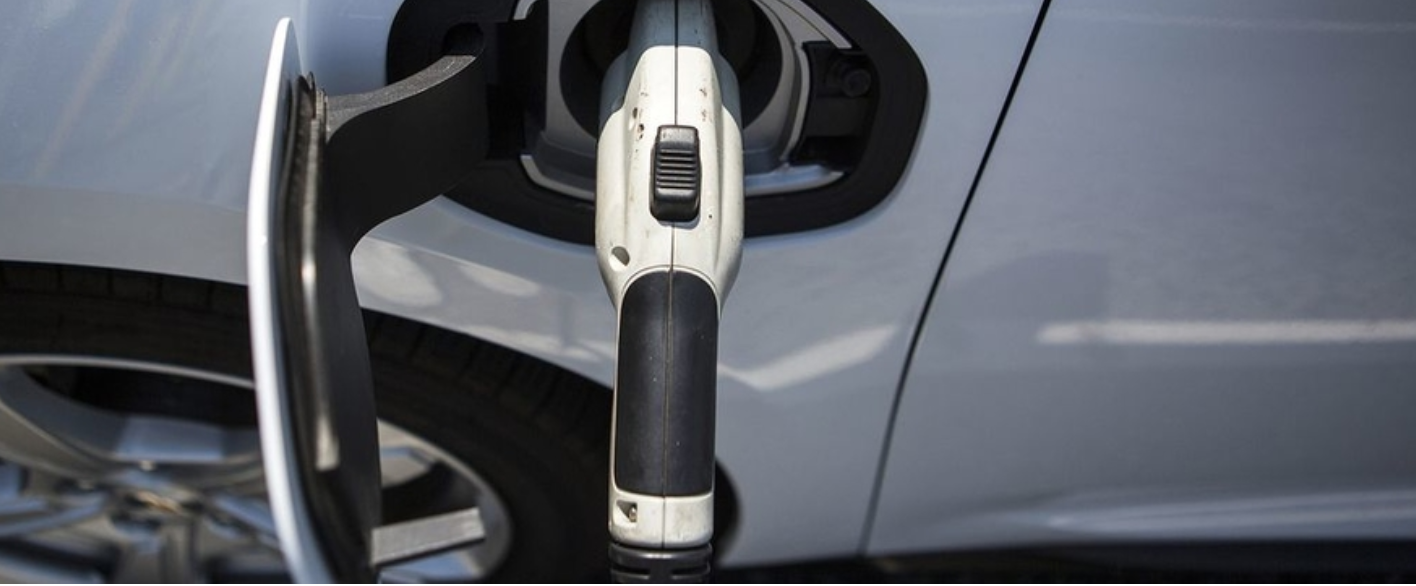
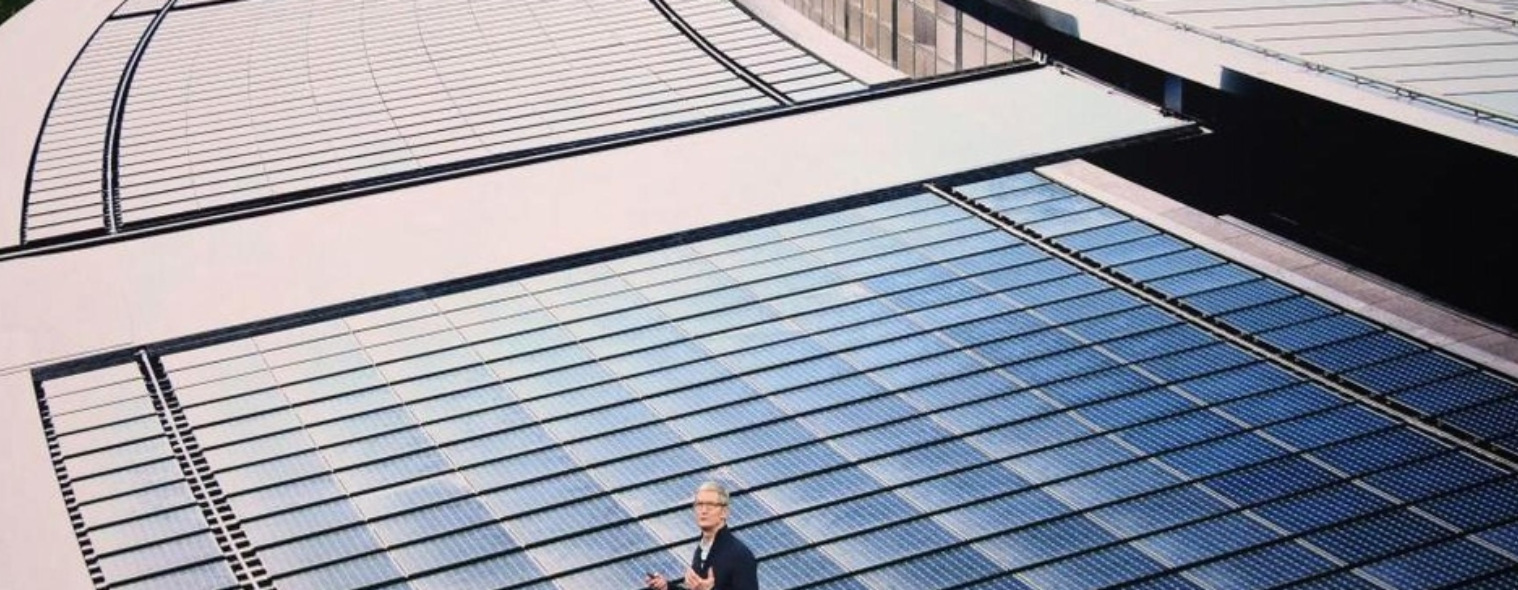

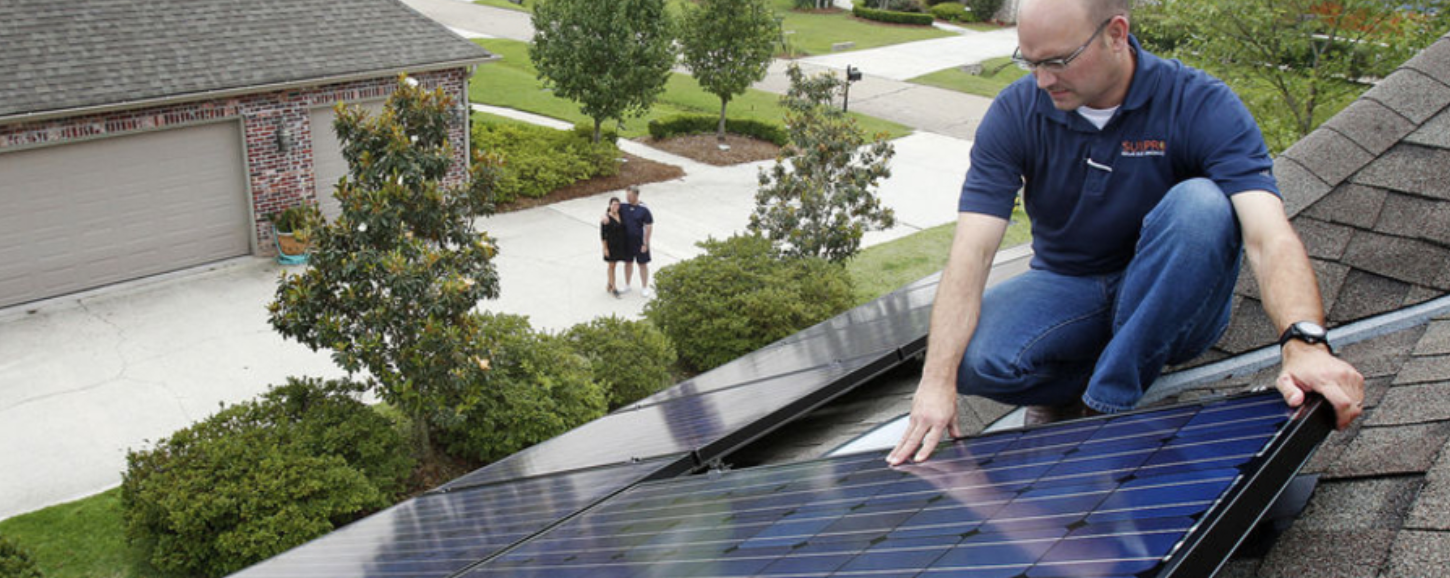
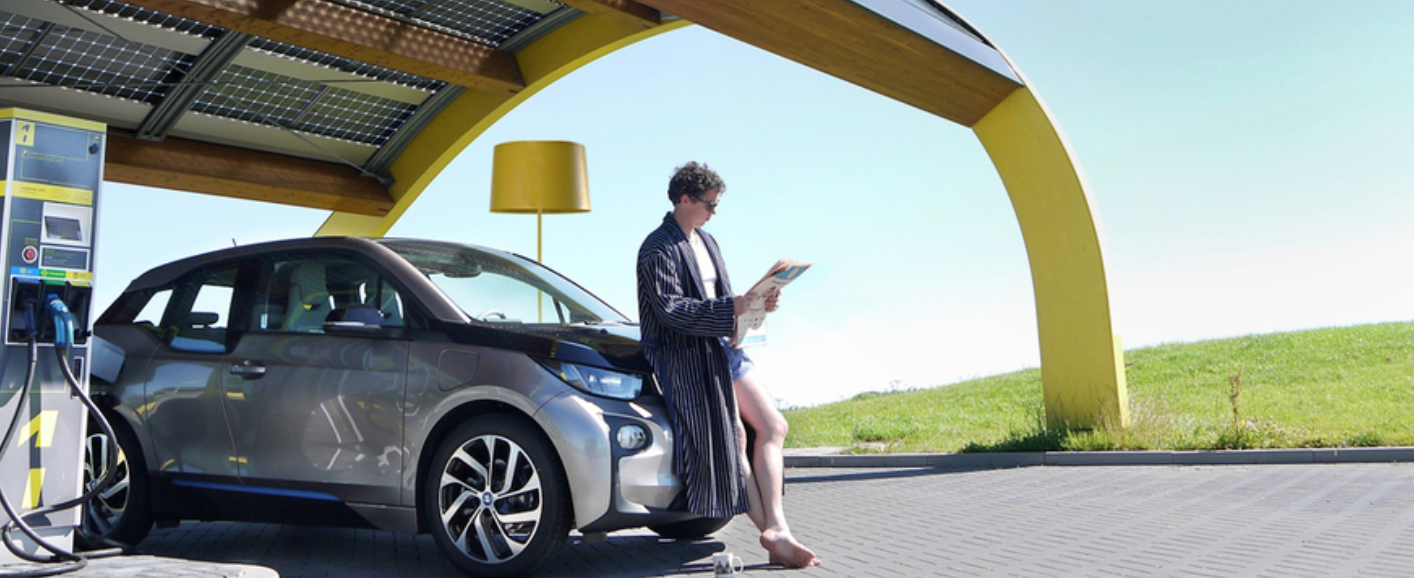
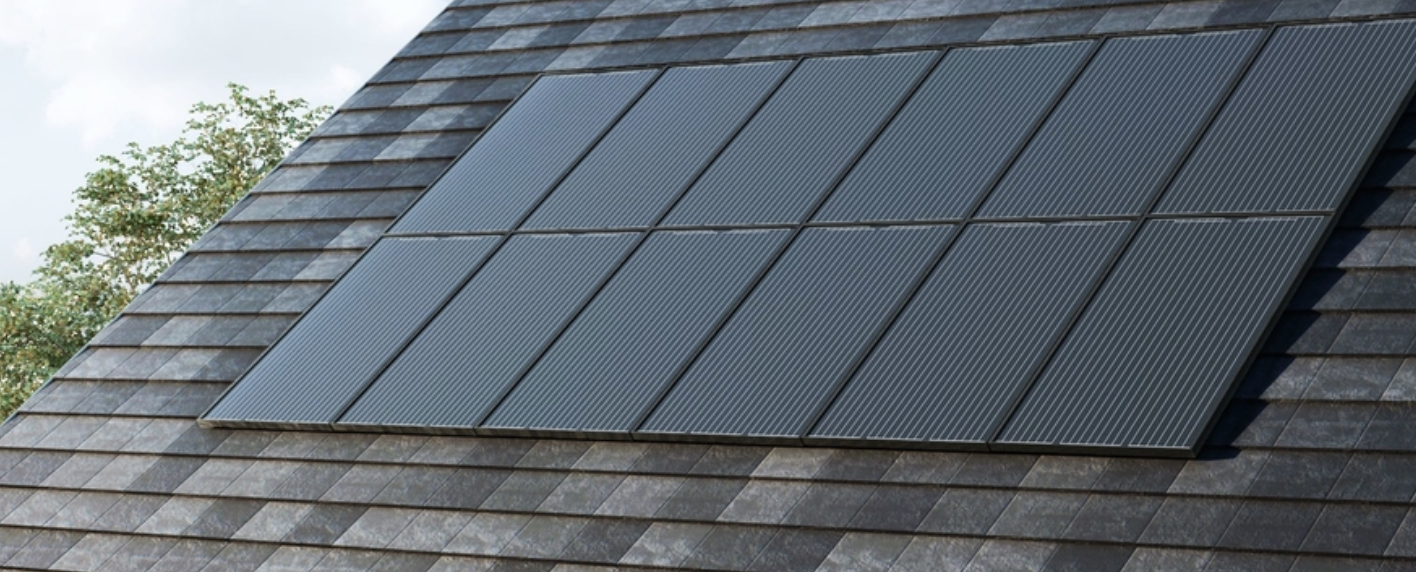
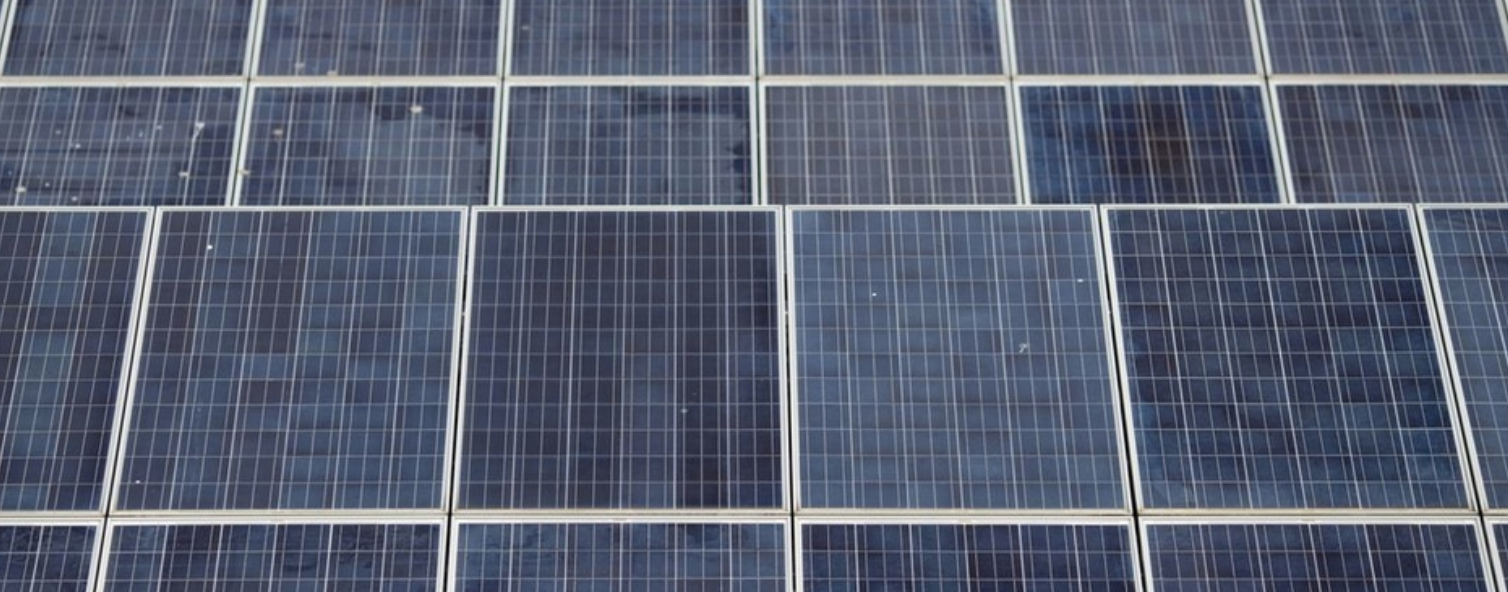
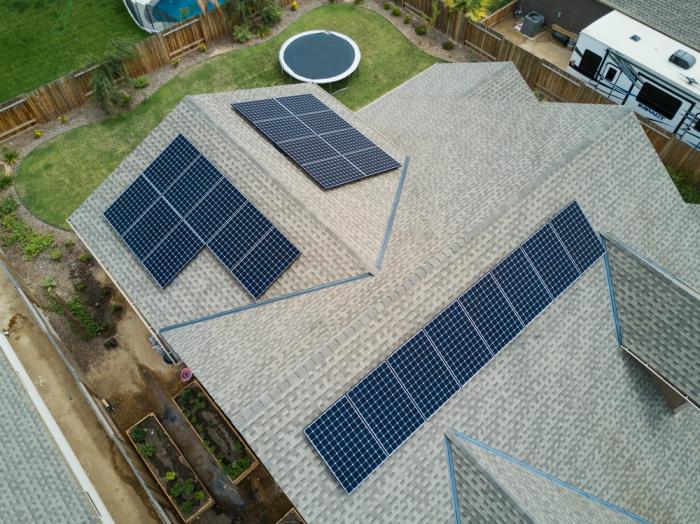
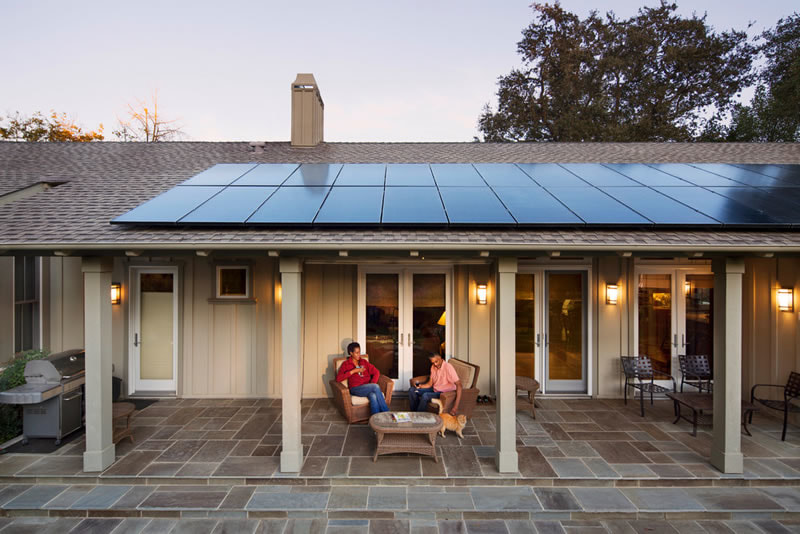
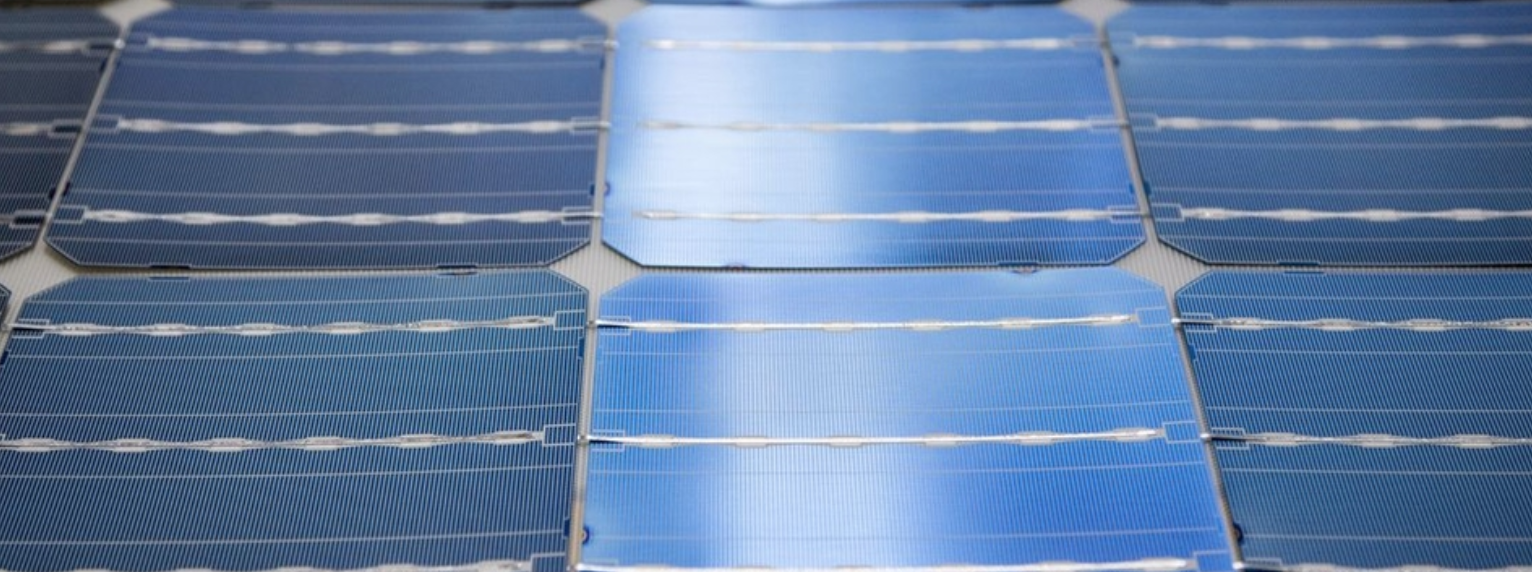
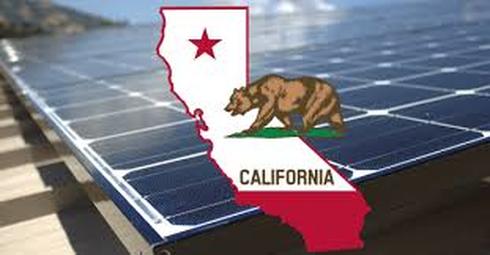
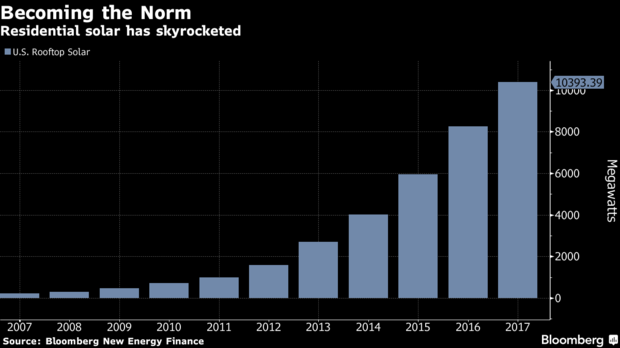
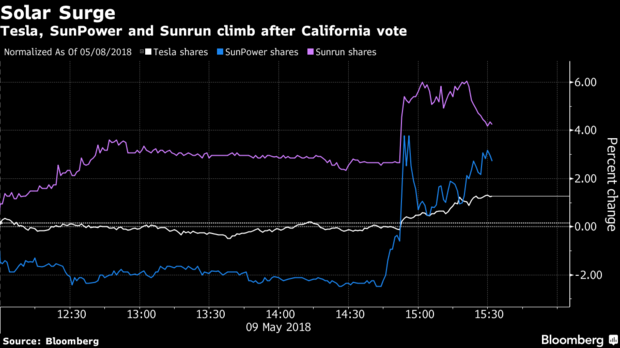
 RSS Feed
RSS Feed
